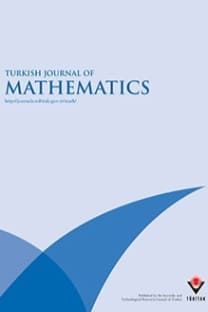Asymptotics of the ruin probability with claims modeled by \a-stable aggregated AR(1) process
Asymptotics of the ruin probability with claims modeled by \a-stable aggregated AR(1) process
Key words: Ruin probability, dependent a-stable claims, aggregation, random-coefficient AR(1) process, mixed stable moving average self-similar process, long memory,
___
Alparslan, U.T.: Exceedance of power barriers for integrated continuous-time stationary ergodic stable processes. Adv. Appl. Probab. 41, 874–892 (2009).Alparslan, U.T., Samorodnitsky, G.: Asymptotic analysis of exceedance probability with stationary stable steps generated by dissipative flows. Scandinavian Actuarial J. 78, 1–28 (2007).
Ding, Z., Granger, C.W.J.: Modeling volatility persistence of speculative returns: a new approach. J. Econometrics 73, 185–215 (1996).
Embrechts, P., Veraverbeke, N.: Estimates for the probability of ruin with special emphasis on the possibility of large claims. Insurance: Mathematics and Economics 1, 55–72 (1982).
Giraitis, L., Leipus, R., Surgailis, D.: Aggregation of random coefficient GLARCH(1,1) process. Econometric Theory 26, 406–425 (2010).
Granger, C.W.J.: Long memory relationship and the aggregation of dynamic models. J. Econometrics 14, 227–238 (1980).
Heyde, C.C.,Yang, Y.: On defining long-range dependence. J. Appl. Probab. 34, 939–944 (1997).
Mikosch, T., Samorodnitsky, G.: Ruin probability with claims modeled by a stationary ergodic stable process. Ann. Probab. 28, 1814–1851 (2000).
Puplinskait˙e, D., Surgailis, D.: Aggregation of random coefficient AR(1) process with infinite variance and common innovations. Lithuanian Math. J. 49, 446–463 (2009).
Puplinskait˙e, D., Surgailis, D.: Aggregation of random coefficient AR1(1) process with infinite variance and idiosyncratic innovations. Adv. Appl. Probab. 42, 509–527 (2010).
Samorodnitsky, G., Taqqu, M.S.: Stable Non-Gaussian Random Processes. New York. Chapman and Hall 1994. Zaffaroni, P.: Contemporaneous aggregation of linear dynamic models in large economies. J. Econometrics 120, 75–102 (2004).
Zaffaroni, P.: Aggregation and memory of models of changing volatility. J. Econometrics 136, 237–249 (2007).
Zaffaroni, P.: Contemporaneous aggregation of GARCH processes. J. Time Ser. Anal. 28, 521–544 (2007).
- ISSN: 1300-0098
- Yayın Aralığı: 6
- Yayıncı: TÜBİTAK
Asymptotics of the ruin probability with claims modeled by \a-stable aggregated AR(1) process
Karina PERİLİOĞLU, Donata PUPLINSKAITE
Braiding for internal categories in the category of whiskered groupoids and simplicial groups
İdris ÖREN, Ömer PEKŞEN, Djavvat KHADJIEV
On characterization and stability of alternate dual of g-frames
Ali Akbar AREFIJAMAAL, Soheila GHASEMI
Approximation by iterates of Beta operators
Purshottam Narain AGRAWAL, Karunesh Kumar SINGH, Vikas Kumar MISHRA
Rings over which every module has a flat $delta$-cover
Djavvat KHADJIEV, İdris ÖREN, Ömer PEKŞEN
C.P. modules and their applications
Generalized class invariants with `Thetanullwerte\'
